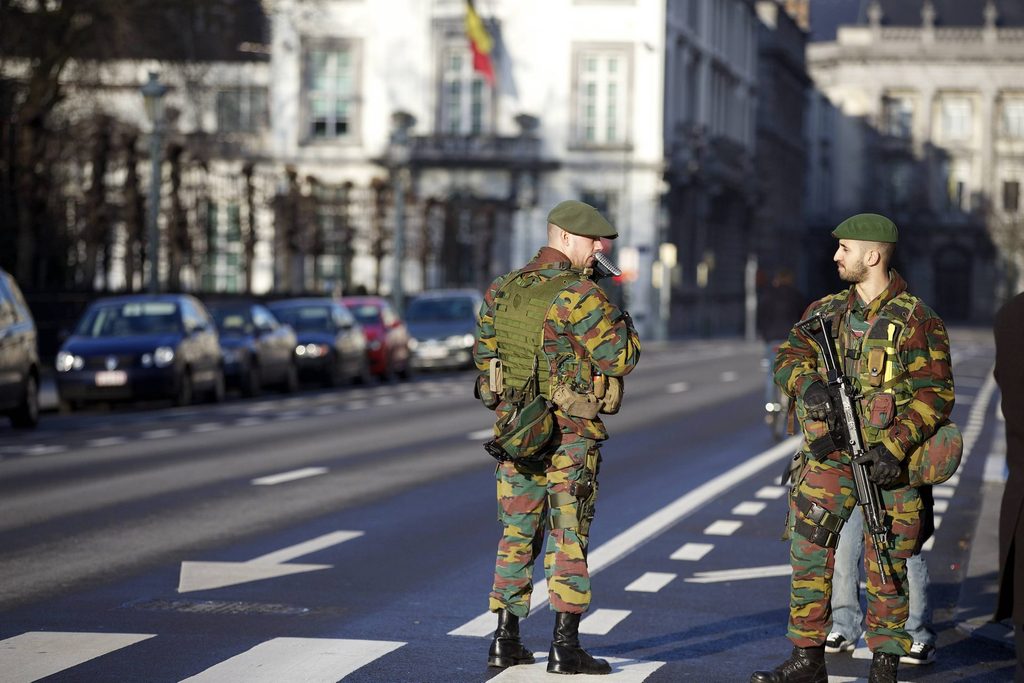The greatest threat of terrorism continues to come from individuals inspired by Islamist extremism, often referred to as jihadism ideology. However, violence from right-wing extremists can also not be ruled out.
Last year, there were 215 threat reports related to terrorism or extremism in Belgium, a slight decrease from the previous year, when 218 threat reports were made, according to the latest report by the organisation responsible for threat analysis in Belgium: the Coordination Body for Threat Assessment (OCAD).
"In terms of the threat picture, we see that the greatest threat continues to come from individuals inspired by jihadist-Islamist ideology," the organisation noted. The ideology of IS, and to a lesser extent of al-Qaeda, continues to inspire people. "Its reach may have declined, but on closed, specialised social media channels the propaganda is still alive and kicking," the report read.
Looking back at 2021 in its last report, OCAD warned that right-wing extremism was gaining ground at an alarming rate and that social media is an aggregator for spreading such ideas. In 2022, it noted that conspiracy theories and a wide range of triggers also risked inciting individuals to violence, adding that violent action from right-wing extremist quarters also presents a threat.
"The threat is constantly changing. This means we have to remain vigilant and continue intensive cooperation between partner services," said OCAD director Gert Vercauteren.
Individuals radicalised
The report showed that, of the 215 threat reports, most concerned so-called lone actors. "The greatest risk of incidents in Belgium – as much as elsewhere in Europe – is that individuals radicalise on their own and choose to commit a violent act in their own country. It is therefore no longer a question of commandos being sent from (a jihadi conflict zone in) abroad with a violent plot to the West."
Nevertheless, OCAD did report that some 20% of threat reports still involve plans being plotted by several individuals together.
A total of 80 new extremists and terrorists were added to the list of OCAD, a database containing names and information on potentially dangerous individuals or groups that are being monitored, which was created in 2016 after the attacks in Zaventem and Maelbeek.
Meanwhile, around 90 were also removed from the common database in 2022, meaning these people have "evolved positively and there is a clear process of reintegration into society."
Consequently, the list now includes around 700 people, of which 87% come from the corner of jihadist ideology, and just under 10% have links to right-wing extremism. Left-wing extremists accounted for 2%. "The remaining individuals are followed up in the context of various threats arising from a specific theme in society such as anti-establishment sentiments following the COVID-19 pandemic or a political context abroad."

The scene of the stabbing of a police officer in Brussels in November 2022. Credit: Belga/ Hatim Kaghat
OCAD stressed that it has noted a significant increase in the number of threats against police forces, referring to the young police officer who was stabbed to death while on patrol on Rue d’Aerschot in Brussels. The perpetrator was included on the "radicalised" list of OCAD.
"2022 will long be remembered as the year in which a young policeman in Brussels lost his life after an attack by a known extremist. The attack put the finger on the wound of dealing with extremists with mental problems. With such painful events, only one response is to learn lessons and look for ways to improve our approach," Vercauteren said.

